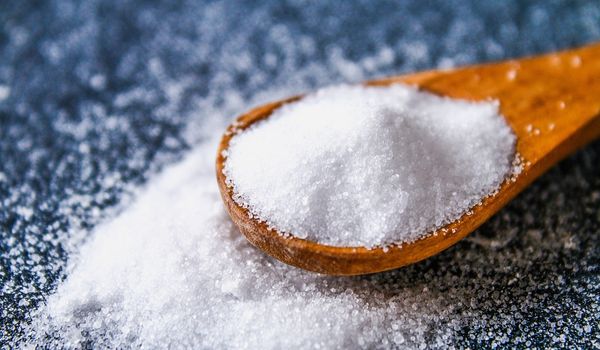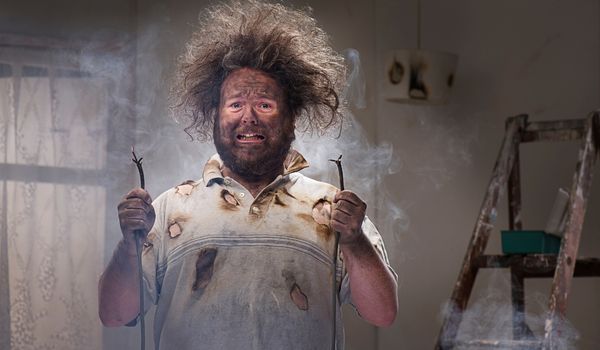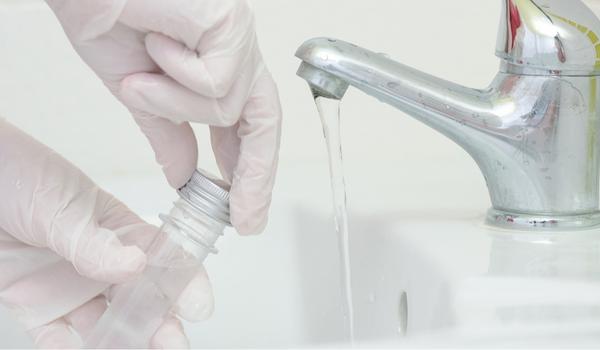If your tap water has started tasting like ocean spray, you’re not imagining things — and it’s not normal. A salty flavor in drinking water can point to anything from harmless mineral imbalances to serious issues like seawater intrusion or faulty water softener settings.
The good news? Most fixes are simple once you know what’s going on.
✅ Quick Takeaways
- 🧂 Saltiness usually comes from excess sodium, chloride, or sulfates in your water — often due to natural sources, water softeners, or contamination.
- 🔧 Water softeners can cause salty-tasting water if they’re overusing salt or malfunctioning.
- 🌊 Coastal wells and storm runoff can allow saltwater or road salt to seep into groundwater.
- 🧪 Testing your water is the easiest way to confirm the cause and find the right solution.
- 💡 Pro Tip: If salty water appears suddenly or after storms, it could be a sign of groundwater contamination or plumbing issues — especially with private wells.
🧂 What Causes That Salty Taste?

Water that tastes overly salty usually means it’s carrying more than just hydration — it could be picking up minerals, softener residue, or even something from the environment around your well.
Here’s a breakdown of common causes:
| ⚠️ Source | 🧪 Why It Happens |
|---|---|
| High Chloride or Sodium | These minerals occur naturally in some aquifers — especially near coastlines or salt-rich soil. |
| Seawater Intrusion | In coastal areas, saltwater can seep into freshwater wells — especially during drought or overuse. |
| Old or Overused Softeners | Too much salt in the brine tank — or a system malfunction — can cause sodium to leak into your water. |
| Runoff from Roads or Farms | Melting snow or irrigation can carry road salt or fertilizer into groundwater. |
| Industrial Waste or Mining | Operations near aquifers may introduce salts and sulfates into your source water. |
💡 Pro Tip: If your water only tastes salty after your softener regenerates, that’s a red flag. It might be overusing salt — or leaking brine where it shouldn’t.
🚱 Is Salty-Tasting Water Safe?

Usually, yes — but it depends on what’s behind the taste.
In small amounts, minerals like sodium and chloride aren’t harmful for most people. But higher levels can be a problem, especially if you’re on a low-sodium diet, have kidney issues, or are sensitive to changes in taste or digestion.
💡 Worth Knowing:
- Sodium sulfate can act as a laxative in large quantities
- High chloride may contribute to pipe corrosion and elevated blood pressure
- Softened water already adds sodium to your diet — more salt just compounds the issue
And beyond your health, salty water isn’t ideal for pets, gardens, or aquariums. Sensitive plants and fish may not tolerate elevated mineral levels.
👉 If it tastes off — especially after softener cycles or during dry spells — it’s worth testing your water and adjusting your setup.
🛠️ How To Fix Salty Water (Without Guesswork)

Whether it’s a one-time taste or a daily annoyance, there’s a fix. But the right solution depends on what’s causing it.
Here’s a breakdown of what to check — and what to do:
| 🧪 Problem | ✅ Fix |
|---|---|
| 🧂 Salty taste after softener regen | Check softener settings — high hardness inputs = more salt used |
| 🌊 Water always tastes salty | Inspect softener for leaks, stuck valves, or brine tank issues |
| 🏖️ Near coast or salt mine? | Consider seawater intrusion — test for high chloride levels |
| ⏳ Softener is 10–15+ years old | Upgrade to a salt-efficient model with better brine rinse controls |
| 🚜 On a well near farms or roads | Run a full test — road salt or ag runoff could be creeping in |
| 🏙️ City water with recent changes | Contact provider — sulfate or chloride levels may be temporarily elevated |
💡 Pro Tip: If you notice salty taste after installing or adjusting a water softener, that’s often the culprit. A quick tune-up or resin bed flush might fix the issue.
🧂 Where the Salty Taste Comes From

That briny flavor usually means something mineral-related is sneaking into your supply. While some minerals are harmless (and even beneficial), too much of the wrong ones can overwhelm your tastebuds — and your water quality.
| 💥 Source | ⚠️ What It Does |
|---|---|
| Chloride | Often from natural deposits, road salt runoff, or seawater intrusion. Makes water taste sharp or salty. [NY Dept. of Health explains more] |
| Sulfates | Can give water a bitter-salty flavor — common near mining areas or ag-heavy regions. |
| High Sodium | May come from softeners or natural deposits — especially common in softened water. |
| Seawater Intrusion | Happens in coastal wells when saltwater enters freshwater aquifers. |
| Road Salt | Melts off streets and highways into groundwater — especially near private wells. |
| Industrial/Agricultural Waste | Runoff can carry mineral salts and chemicals into wells or local water supplies. More on well water issues here. |
💡 Pro Tip: If you’re noticing a salty or bitter taste after rain or snowmelt, it might be runoff — not your pipes or plumbing.
🛠️ Water Softener Making Things Worse?

If you’ve got a water softener and the salty taste shows up just after regeneration — it might be your system, not your source.
Water softeners work by flushing out minerals with a brine solution. It’s normal for a tiny bit of sodium to remain in the water afterward. But if something’s off, you could end up with more salt than expected.
🔧 Common Causes:
- Sticky valves or cracked lines: These let brine seep into the freshwater line when it shouldn’t.
- Clogged drain or injector: Salt buildup during regeneration can linger and leak back in.
- Wrong settings: If your softener is regenerating too often or using too much salt, your water might taste more like a sports drink than spring water.
👉 Here’s what to check if your softener’s using too much salt
💡 Pro Tip: If your softener is more than 10–15 years old, it may be time for an upgrade. Newer systems use salt more efficiently — and leave less in your glass.
🧪 Test Before You Guess

If your water tastes salty, the fastest way to get answers is a simple water test. It’ll tell you whether the issue is sodium, chloride, sulfates — or something you didn’t expect.
🔎 Why Testing Helps:
- Narrow it down — Whether the problem is your softener or the source itself
- Check for red flags — Like chloride over 250 mg/L, which can affect taste and plumbing
- Know before you filter — Not all filters target the same issues
👉 Need a test that checks for sodium, chloride, and more? Start here
💡 Pro Tip: If you’re on well water, salty taste could be a sign of deeper problems like seawater intrusion or runoff. Annual testing helps you stay ahead of changes.
💧 What Filters Actually Help?

Once you know what’s in your water, choosing the right filter is easy. Most salty taste issues boil down to high sodium, chloride, or sulfates — and some filters handle those better than others.
🛠️ Top Options:
- Reverse Osmosis (RO): The gold standard for salty taste. It strips out sodium, chloride, sulfates, and dozens of other contaminants — even tiny ions most filters miss.
- Whole House Filters: Great if the issue affects all your fixtures. Pair a carbon filter with RO at the tap for full coverage.
- Water Softeners (when tuned properly): If your softener is causing the issue, it might just need a setting adjustment — or a salt-efficient upgrade.
💡 Pro Tip: If you’re already using a softener, double-check that it’s not regenerating too often or using excess salt — this guide may help.
✅ Final Thoughts
A salty aftertaste in your water might seem like a small thing — but it’s often a sign that something’s off, whether it’s your softener, your well, or a deeper issue underground.
Luckily, it’s fixable.
- 🧪 Start with a water test — it’s the best way to pinpoint whether minerals, chloride, or system issues are to blame.
- 🚿 From softener tweaks to a reverse osmosis system under your sink, the right setup can bring your water back to clean, crisp, and refreshingly normal.
💡 Pro Tip: If your water still tastes off even after filtering, take a closer look at your system’s age and maintenance history — a small upgrade might make a big difference in every sip.
 97 people found this helpful. Was this guide helpful to you?
97 people found this helpful. Was this guide helpful to you? 

